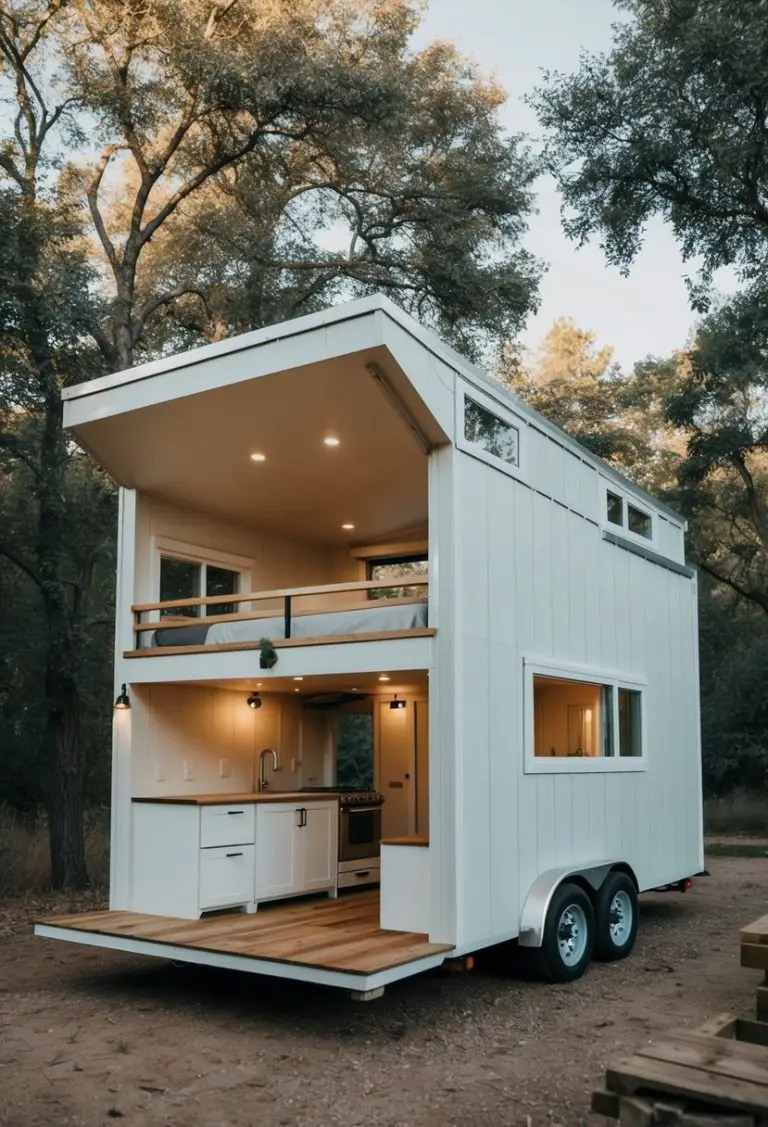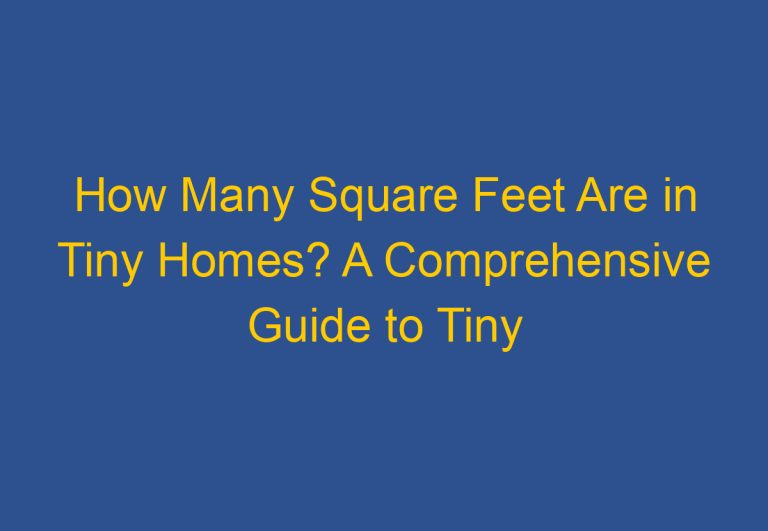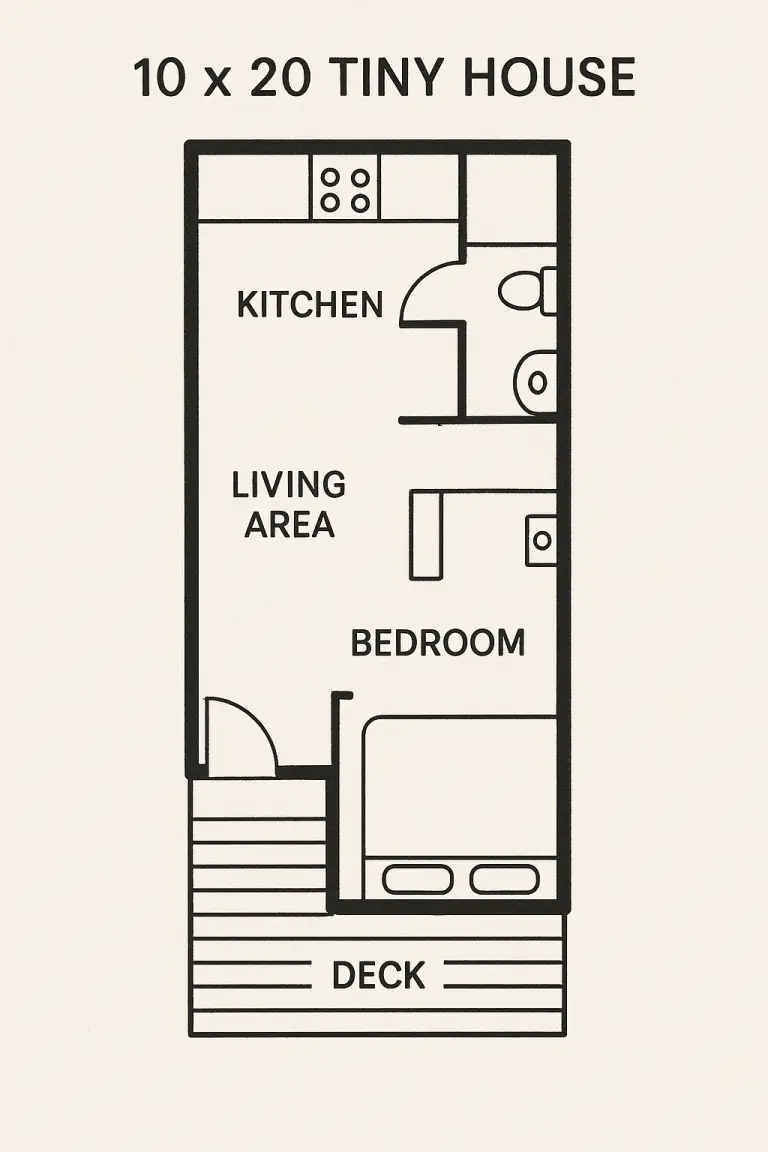Are Tiny Homes Legal in All 50 States? A Comprehensive Look at the Current State of Tiny Home Regulations in the US
Tiny homes have become increasingly popular in recent years, with many people opting for a simpler, more sustainable lifestyle. However, when it comes to the legality of tiny homes, things can get a bit complicated. Many people wonder whether tiny homes are legal in all 50 states, and the answer is not a simple yes or no.
In general, tiny homes are legal in most states, but the laws and regulations can vary widely from one state to another. Some states have embraced the tiny house movement and have made it easy for people to build and live in tiny homes, while others have strict regulations that make it difficult or impossible to do so. It’s important to research the laws in your state before building or buying a tiny home, to avoid any legal issues down the line.
Despite the legal challenges, the tiny house movement continues to grow, with many people finding that the benefits of tiny living far outweigh the challenges. From reducing their carbon footprint to simplifying their lives and saving money, there are many reasons why people are choosing to live in tiny homes. However, it’s important to do your research and make sure that you are complying with all relevant laws and regulations in your state.
Legality and Zoning Regulations
When it comes to tiny homes, the legality and zoning regulations vary from state to state. While tiny homes are legal in all 50 states, the specific laws and regulations around them can be complex and confusing. In this section, we’ll explore some of the key factors to consider when it comes to the legality and zoning regulations of tiny homes.
Understanding State Zoning Laws
One of the most important things to consider when it comes to tiny homes is state zoning laws. Zoning laws dictate how land can be used, and they vary from state to state. Some states have specific regulations around tiny homes, while others do not. For example, California, New York, and Oregon have all passed laws that allow for tiny homes on wheels to be used as accessory dwelling units (ADUs) in certain circumstances. Other states, like Texas, Florida, and Arizona, have no specific regulations around tiny homes, but they are generally allowed as long as they meet certain building codes and safety standards.
Tiny House Specific Regulations
In addition to state zoning laws, there are also specific regulations around tiny homes that you’ll need to be aware of. For example, many states have minimum square footage requirements for homes, and some have specific ceiling height requirements as well. Building codes and safety regulations also vary from state to state, so it’s important to do your research and make sure your tiny home meets all relevant standards.
Building Codes and Safety Standards
When it comes to building a tiny home, safety should be a top priority. Most states require builders to obtain permits before starting construction, and there are specific building codes and safety standards that must be followed. These regulations can vary depending on the state and the type of tiny home you’re building (e.g. on wheels or on a foundation), so it’s important to do your research and make sure you’re following all relevant guidelines.
Local Ordinances and Community Acceptance
In addition to state regulations, it’s also important to consider local ordinances and community acceptance. While tiny homes may be legal in a particular state, they may not be allowed in certain cities or towns. Some communities are more welcoming to tiny homes than others, so it’s important to do your research and make sure you’re building in a community that is supportive of your tiny home lifestyle.
Exceptions and Advocacy
While tiny homes are generally legal in all 50 states, there are some exceptions. For example, some states require that tiny homes be built on a foundation, while others require that they be built on wheels. There are also some states that have no specific regulations around tiny homes at all. In these cases, it’s important to advocate for the tiny home movement and work to change regulations and laws that are not supportive of tiny homes.
Utilities and Infrastructure
When it comes to living in a tiny home, utilities and infrastructure can be a challenge. Many tiny homes are not connected to traditional water and electricity systems, and some communities may not have the infrastructure in place to support tiny homes. It’s important to do your research and make sure you have a plan in place for accessing utilities and infrastructure before you start building your tiny home.
Movement and Travel with Tiny Homes
Finally, it’s important to consider how you will move and travel with your tiny home. Many tiny homes are built on wheels, which allows for easy movement, but there are still regulations around where you can park your tiny home. Some communities have tiny home communities or RV parks that are specifically designed to accommodate tiny homes, while others may not allow them at all. It’s important to do your research and make sure you have a plan in place for where you will park and live in your tiny home.
State-By-State Analysis
When it comes to tiny homes, the legality of these small abodes varies from state to state. While some states have favorable laws that make it easy to build and live in a tiny home, others have restrictive regulations that make it difficult to do so. In this section, we will take a closer look at the state-by-state analysis of tiny home laws in the US.
States with Favorable Tiny House Laws
Some states have embraced the tiny home movement and have enacted laws that make it easier for people to build and live in these small dwellings. For example, California, Oregon, Texas, Florida, Arizona, North Carolina, and Colorado are among the states with popular tiny home communities. These states have laws that allow for tiny homes on wheels, as well as stationary tiny homes that are built on a foundation.
Challenges in Restrictive States
Unfortunately, not all states are as welcoming to tiny homes. States like New York, North Dakota, New Jersey, and West Virginia have laws that specifically make tiny homes illegal. Other states, like Wisconsin, Iowa, and Louisiana, have restrictions that make it difficult to build and live in a tiny home. For example, some states require a minimum square footage for a dwelling, which can be difficult for tiny homes to meet. Other states have strict zoning regulations that limit where a tiny home can be located.
Emerging Trends in Tiny Home Legislation
Despite the challenges, there are some emerging trends in tiny home legislation that are making it easier for people to build and live in these small dwellings. For example, some states are allowing tiny homes to be used as accessory dwelling units (ADUs), which can provide affordable housing options. Other states are relaxing their rules on loft spaces and ceiling heights, which can make it easier to build a tiny home with a loft.
Case Studies: Successes and Setbacks
There have been some successes and setbacks in the tiny home movement. For example, the city of Fresno, California, has enacted laws that allow for tiny homes to be built as ADUs. The town of Spur, Texas, has become a tiny house-friendly community, with zoning regulations that allow for tiny homes on wheels. On the other hand, Pima County, Arizona, has strict regulations that make it difficult to build and live in a tiny home.
Navigating Legal Hurdles for Tiny Homes
For those looking to build and live in a tiny home, navigating the legal hurdles can be a challenge. It is important to research the rules and regulations in your state and local area before building a tiny home. This includes researching permits, zoning regulations, building codes, safety regulations, and ordinances. It is also important to consider utility connections, such as electricity and water, when building a tiny home.
In summary, while tiny homes are not legal in all 50 states, there are many states that have favorable laws for these small dwellings. However, navigating the legal hurdles can be a challenge, and it is important to research the rules and regulations in your area before building a tiny home.
Frequently Asked Questions
What are the zoning regulations for tiny homes in various states?
Zoning regulations for tiny homes vary greatly from state to state. Some states have no specific regulations for tiny homes, while others have strict requirements for size, design, and location. It is important to research the zoning regulations in your state before building or purchasing a tiny home.
How do tiny house laws vary from state to state?
Tiny house laws vary from state to state, with some states being more welcoming to tiny homes than others. Some states have specific laws and regulations for tiny homes, while others do not. It is important to research the laws in your state before building or purchasing a tiny home.
What is the maximum allowable size for a tiny house in the United States?
The maximum allowable size for a tiny house in the United States varies from state to state. Some states have no specific size requirements, while others have strict size limitations. Generally, a tiny house is considered to be less than 400 square feet, but this can vary depending on the state.
Are there any states that offer incentives for building tiny homes?
Some states offer incentives for building tiny homes, such as tax credits or grants. However, these incentives vary from state to state and may only be available in certain areas. It is important to research the incentives available in your state before building or purchasing a tiny home.
What permits are required to build a tiny house on private property?
Permits required to build a tiny house on private property vary depending on the state and local regulations. Some states require building permits, while others do not. It is important to research the permit requirements in your state before building a tiny home.
Can I permanently reside in a tiny house on my own land in any state?
In most states, it is legal to permanently reside in a tiny house on your own land as long as the dwelling meets all zoning and building code requirements. However, it is important to research the regulations in your state before building or purchasing a tiny home.










